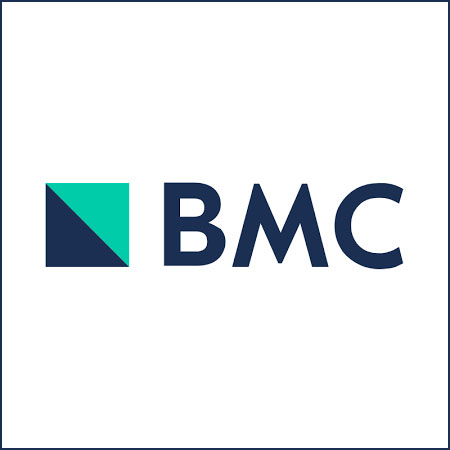Complete Restoration in a patient suffering from osteomalacia
“BDIZ EDI konkret” 1/2024, OEMUS media AG, Germany
Complete Restoration in a patient suffering from osteomalacia
Even with a highly compromised dentition, functional restoration with appealing aesthetics can be achieved. This case report demonstrates how this is possible using the appropriate implants and restoration materials.
Case Presentation
A 38-year-old female patient presented at our practice with the desire for complete aesthetic and functional rehabilitation. The patient had been suffering from osteomalacia for 25 years. During this time, she underwent numerous surgical procedures. The medications administered during the surgeries led to reduced saliva production, which in turn resulted in high susceptibility to caries.
The patient presented with several missing teeth (Fig. 1 and 2). Specifically, these were teeth 14, 15, 16, 23, 24, 25, 26, 27, 35, 36, 37, 45, 46, and 47. A complete overview of the situation was provided by a panoramic X-ray (Fig. 3).
Some of the remaining teeth had undergone endodontic treatment. Only a root fragment filled with gutta-percha, which was non-functional, remained of tooth 14; it was stuck in the jaw. The root-canal-treated tooth 15 served as the middle pillar of a five-unit bridge from tooth 13 to 17. Two root tips remained in the jaw for tooth 16, like tooth 14, non-functional.
In the lower jaw, teeth 33 and 35 had been endodontically treated and, along with the intervening tooth 34, served as support pillars for a four-unit bridge; 36 was designed as a free-end element. Tooth 43 was endodontically treated and crowned, while tooth 44 was only crowned.
Given the many missing and other extraction-worthy teeth, it was decided in the consultation: A complete new supply of both jaws should be carried out using fourteen implants, eight in the upper jaw and six in the lower jaw.
This planning followed the principle that due to the weakened bone, high stress on individual implants or a large force introduction into the respective bone segment should be avoided. Instead, the force should be distributed as broadly as possible – hence the maximum number of implants for a fixed construction.
First, consistent backward planning was carried out. The starting point for this, in addition to the X-rays, were intraoral scans of the mouth situation (upper/lower jaw) and three-dimensional cone beam computed tomography (3-D CBCT). The planned prosthetic restorations were virtually inserted into the patient’s mouth (“3D Smile Design”, exocad GmbH), kept in green in the upper jaw, and in white in the lower jaw.
Already at this stage, the typical jaw movements were played through (protrusion, retrusion, laterotrusion), among other things, to be able to immediately recognize any early contacts (Fig. 4 to 7). In the virtual articulator (exocad GmbH), a bite position was realized; a virtual functional registration was omitted in this case.

The implants were now directly inscribed into the X-ray image: eight in the upper jaw and six in the lower jaw (Fig. 8 and 9). From this, drilling templates with recesses at the implant positions were derived in the next step (Fig. 10). Additional recesses for two fixation screws were incorporated into the drilling template for the lower jaw at both ends. They were later to securely hold the template in place.
The implant insertion was generally planned in such a way that the implant was planned 4 millimeters below the future gingival height or 3.5 mm below the enamel-cement junction and a suitable implant was selected for this (“bone height implant”; Fig. 11 and 12).

The implant position on the alveolar ridge was chosen horizontally so that the distance from the marginal mucosal contour was 4 mm (bone and mucosal thickness buccally) (Fig. 13).
After overlaying the STL data of the actual situation, the wax-up, and the CBCT for the upper jaw, the implants, their positions, and the respective insertion angles were planned (Fig. 14 to 16; exoplan, exocad GmbH). The optimal position of the implants was checked and confirmed (Fig. 17 and 18). Accordingly, the drilling template was now created – first virtually (Fig. 19 and 20). Subsequently, the data set obtained was exported in STL format and the drilling template was printed (DentalCAD, exocad GmbH).
A provisional was also virtually designed and printed. A similar procedure was followed in the lower jaw (Fig. 21 to 23).
After completing this backward planning, the implantological treatment began with the insertion of the fourteen implants (Fig. 24).

Conically shaped bone-level implants with a generously designed apical thread (advantage: primary stability) and a beveled shoulder (advantage 1: less recession of the subcrestal bone; advantage 2: better fitting into narrow jaw ridges), a fine thread in the cervical area (advantage: formation of trabecular bony structures), and a continuously micro- and nanorough surface (advantage: stabilization of the crestal bone level) were used (Esthetic Line, C-Tech IMPLANT, San Pietro in Casale, Bologna/Italy).
All restorations were milled from highly translucent zirconia (IPS e.max ZirCAD Prime, Ivoclar Vivadent) and painted with a paste-like ceramic (MiYO, Jensen GmbH). During the fitting of the restorations in the patient’s mouth, a harmonious occlusion was then shown (Fig. 28 and 29).
The work was finally screwed in. Special multi-unit abutments with a small diameter and with a 1.8-mm screw each for fixing bridges were used (Fig. 30; OMNI, C-Tech IMPLANT, San Pietro in Casale, Bologna/Italy). Thanks to their small diameter, they allow for appealing aesthetics, especially in the anterior area. The patient was happy with her “new teeth” as her desired aesthetics and function were restored (Fig. 31 to 33). The surgical team was pleased.

Discussion
Alternatively to the solution presented here, a removable restoration would have been fundamentally possible in the present case. However, since the patient desired a fixed restoration, the decision was made in favor of this option. However, implantations in the area of the 6s were avoided to prevent the need for bone augmentation. Instead, the prosthetic restorations were designed with free-end elements.
From the therapy chosen here, one can expect a subjectively higher quality of life for the patient as well as a motivating effect on home oral hygiene and the conscientious perception of recall appointments. Under the condition of a four-monthly PZR as well as an annual decontamination with antimicrobial photodynamic therapy (aPDT; HELBO TheraLite Laser, bredent medical GmbH & Co. KG, Walldorf) plus sensor-based occlusion control (T-scan, Tekscan, Norwood, Massachusetts/USA), the prognosis is: This solution should remain in situ as it is for at least twenty years.
Conclusion
The present case shows how, even after years of osteomalacia and significant tooth and bone loss, functional and optical rehabilitation can succeed. Using a screwed construction, the patient is brought back to a genuine FP1 situation, i.e., to a dentition restored with classic crown and bridge prosthetics. Missing teeth or pillars are replaced by conically shaped bone-level implants with pronounced aesthetic advantages (Esthetic Line, C-Tech IMPLANT, San Pietro in Casale, Bologna/Italy). Tip for practice: The crown heights should preferably be in the range of 8 to 12 millimeters for a construction like the one presented here.
Fig. 1 and 2: After multiple tooth losses, the patient desires a functionally and aesthetically optimized solution for her gap-toothed smile.
Fig. 3: Aside from the tooth loss, several of the remaining teeth have undergone endodontic treatment.
Fig. 4–7: False-color simulation of future prosthetic restorations: Even at this early planning stage, tooth movements can be tested and early contacts identified.
Fig. 8 and 9: The planned implants are inscribed into the panoramic image – eight in the upper jaw, six in the lower jaw.
Fig. 10: A drilling template is used to ensure the safe placement of the implants in their respective positions and at the correct angle.
Fig. 11 and 12: Aesthetic completion: The implants used are selected with regard to an appealing optical effect of restorations and gingival components (Esthetic Line, C-Tech IMPLANT, San Pietro in Casale, Bologna/Italy).
Fig. 13: An important rule: The bone thickness and soft tissue thickness around the implant should together amount to 4 millimeters.
Fig. 14–16: Superimposition of the intraoral scan of the current situation, the wax-up, and the CBCT for the upper jaw: Basis for finding the optimal position of the implants.
Fig. 17–20: For a safe insertion of the implants, a drilling template is designed according to the virtual model and later manufactured (Guide Creator, exocad GmbH).
Fig. 21–23: Just as for the upper jaw, the overlay (matching) of the IOS, wax-up, and CBCT is carried out, the implants are virtually planned, and finally, drilling templates are manufactured.





